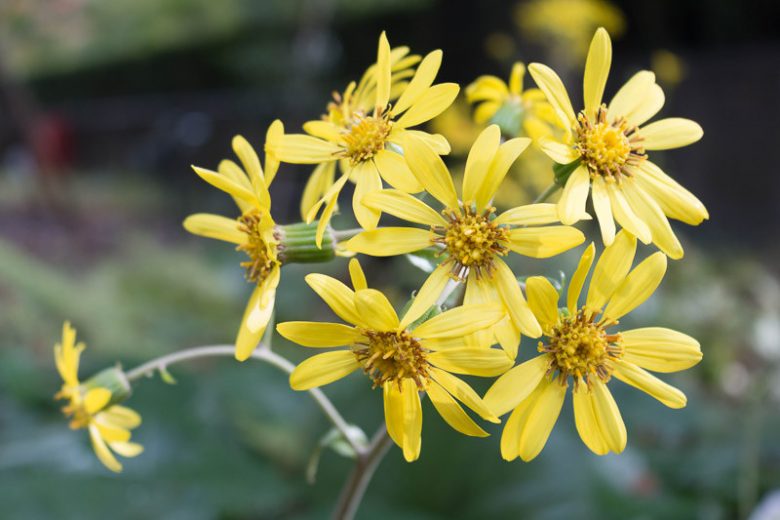Leopard Plant: A strikingly beautiful perennial for the shade garden
The Leopard Plant, scientifically known as Ligularia, is a visually striking perennial that adds a dramatic touch to garden spaces, especially in shaded areas.
Habit: This plant is known for its bold and architectural habit, forming large, clumping mounds. Its foliage varies from heart-shaped to serrated leaves, often with a glossy or leathery texture, and it grows in an upright bushy manner. This growth habit makes Ligularia a focal point in any garden setting.
Hardiness: Ligularia is hardy in USDA zones 3 through 9, demonstrating a notable resilience to colder climates. It thrives in moist, well-draining soil, preferring cooler, shaded conditions that mirror its native mountainous habitats in Asia. The plant’s leaves may wilt under intense sunlight, revealing its preference for shadier environments.
Flowers and Bloom Time: The plant boasts tall spikes of daisy-like flowers, predominantly blooming in mid to late summer. These vibrant yellow or orange flowers provide a bright contrast to the dark foliage and add color to the garden when many other plants have finished their bloom cycles.
Uses: Ligularia is ideal for adding visual interest to shaded garden areas, such as woodland settings, shaded borders, or near water features like ponds. Its dramatic presence makes it suitable for creating focal points or for mass plantings.
Benefits: Beyond its aesthetic appeal, Ligularia attracts pollinators like bees and butterflies, enhancing the garden’s biodiversity. It’s also ideal for damp areas in the garden where other plants might struggle, and its large leaves offer interesting texture and color contrasts when combined with other shade-loving plants.

